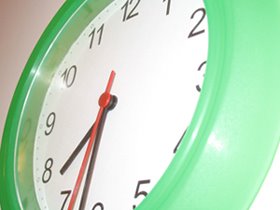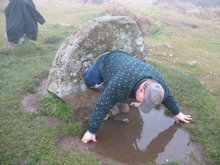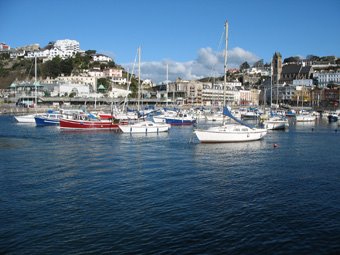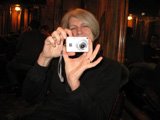More about the sun
A couple of days ago, there was a total eclipse of the sun. People all over the world were awash with the excitement.
But it was less exciting in London. Here, the sun is eclipsed almost every day:

We hope that you enjoyed your flight and that your stay in London, or wherever your final destination may be, is a pleasant one.
A couple of days ago, there was a total eclipse of the sun. People all over the world were awash with the excitement.

Shepherd’s Bush is an area in west London in the borough of Hammersmith and Fulham. It was possibly named for the shepherds who used to use the area for their sheep, or possibly just for a guy who lived there. It was the site of the Olympics in both 1908 and 1948, and has one of London’s best concert venues for big shows. You can go to any number of restaurants or interesting shops there, or take a tour or watch a taping of a tv show at the BBC Television Centre, which dominates much of the neighborhood.

 Yesterday in England, and assorted other places around the world, the clocks jumped forward one hour for daylight-savings time. But in the U.S. (in most of the states), the clocks won’t be set forward until next weekend. Which means that for this week, I’m six hours ahead of the eastern U.S., rather than five. *sigh* It makes it seem just a little more distant.
Yesterday in England, and assorted other places around the world, the clocks jumped forward one hour for daylight-savings time. But in the U.S. (in most of the states), the clocks won’t be set forward until next weekend. Which means that for this week, I’m six hours ahead of the eastern U.S., rather than five. *sigh* It makes it seem just a little more distant.
After a lot of cold weather lately, London was treated to a warm and beautiful Sunday this weekend. I went to Chiswick, where John and I took advantage of the sun and walked along an attractive part of the Thames. There were people there doing far more athletic and uncomfortable things than walking,

 |
|

 Last week I went out with Jaynna and her friend Vincent, who was visiting London for his spring break. Vincent was visiting from Austin, Jaynna just moved here from Austin, and I used to live in Austin—it’s only natural that we’d want to try the Cafe El Paso. In fact, after a small issue with the pitcher of margaritas (which they eventually took back), it wasn’t bad at all. Each of us got the fajitas.
Last week I went out with Jaynna and her friend Vincent, who was visiting London for his spring break. Vincent was visiting from Austin, Jaynna just moved here from Austin, and I used to live in Austin—it’s only natural that we’d want to try the Cafe El Paso. In fact, after a small issue with the pitcher of margaritas (which they eventually took back), it wasn’t bad at all. Each of us got the fajitas.
And this is the last post about my parents’ visit, which is probably just as well, considering they left nearly a week ago.





This is a quick post, just to finish off the road trip. After leaving Tintagel, we needed to drive fairly far east so we could return the car by 12:30 on Wednesday. We decided to stop at Weston-super-Mare, which is in Somerset county (here’s a map of the counties of England if you, like me, have no idea of their layout).



 The next place we stayed was Penzance. Try as I might, I couldn’t find a single singing—or dancing—pirate. In any event, we stayed at this place.
The next place we stayed was Penzance. Try as I might, I couldn’t find a single singing—or dancing—pirate. In any event, we stayed at this place.

    | People have crawled through this stone for thousands of years for its healing powers. Dad decided that he would do the same. So he took off his coat, suspended himself over the mud, and did it. |

 The pub itself was built in the 13th century, in order to house the workers who were building the church next door.
The pub itself was built in the 13th century, in order to house the workers who were building the church next door.
Mom and Dad left yesterday morning. I’ll keep posting some pictures from the trip, but these posts are obviously several days behind.








There haven’t been any posts here in a while. That’s because my parents and I have been on a road trip along the southern coast of England. We left last Saturday. With dad at the wheel, we headed west, taking in the views and sights along the way.





My parents are here. I’ve been working for the first three days they’ve been here, but they’ve fended for themselves perfectly well, and I’ve managed to meet up with them after work. Last night we went to a pub (for a change) not too far from where I work. Here they are, looking happy to be in an English pub:




Here are a few non-ball-related shots from my trip to Vienna, just to round things out.



